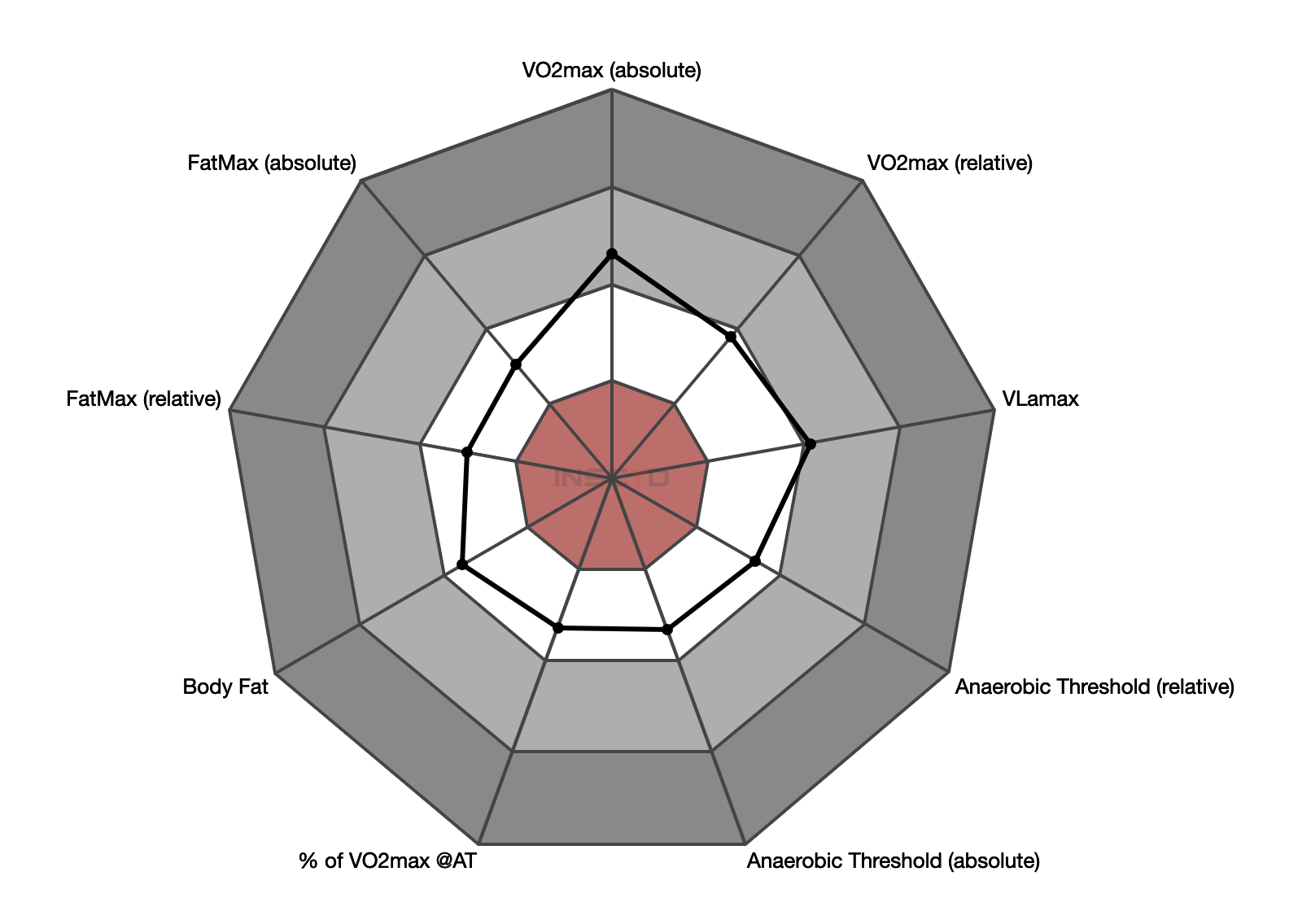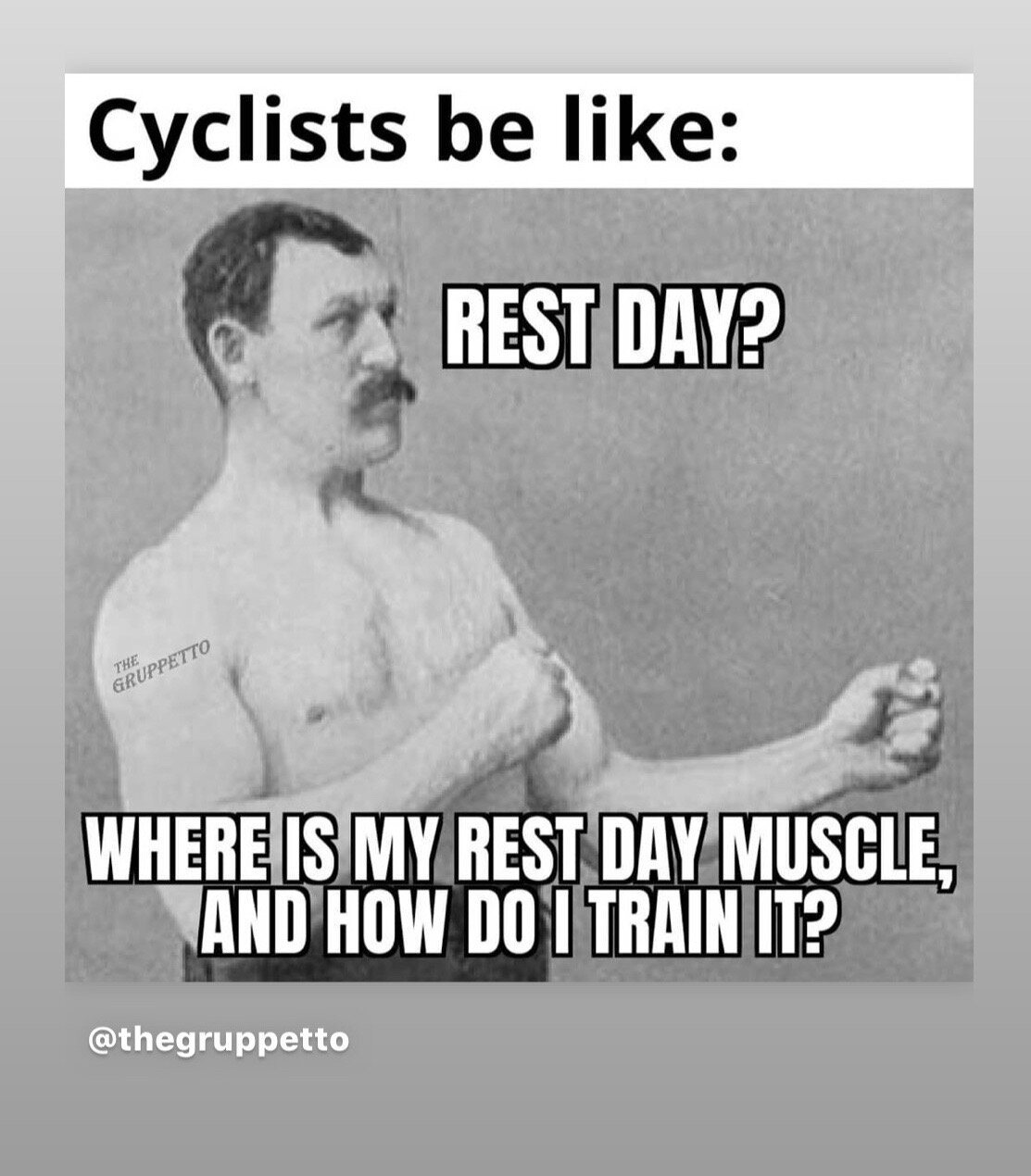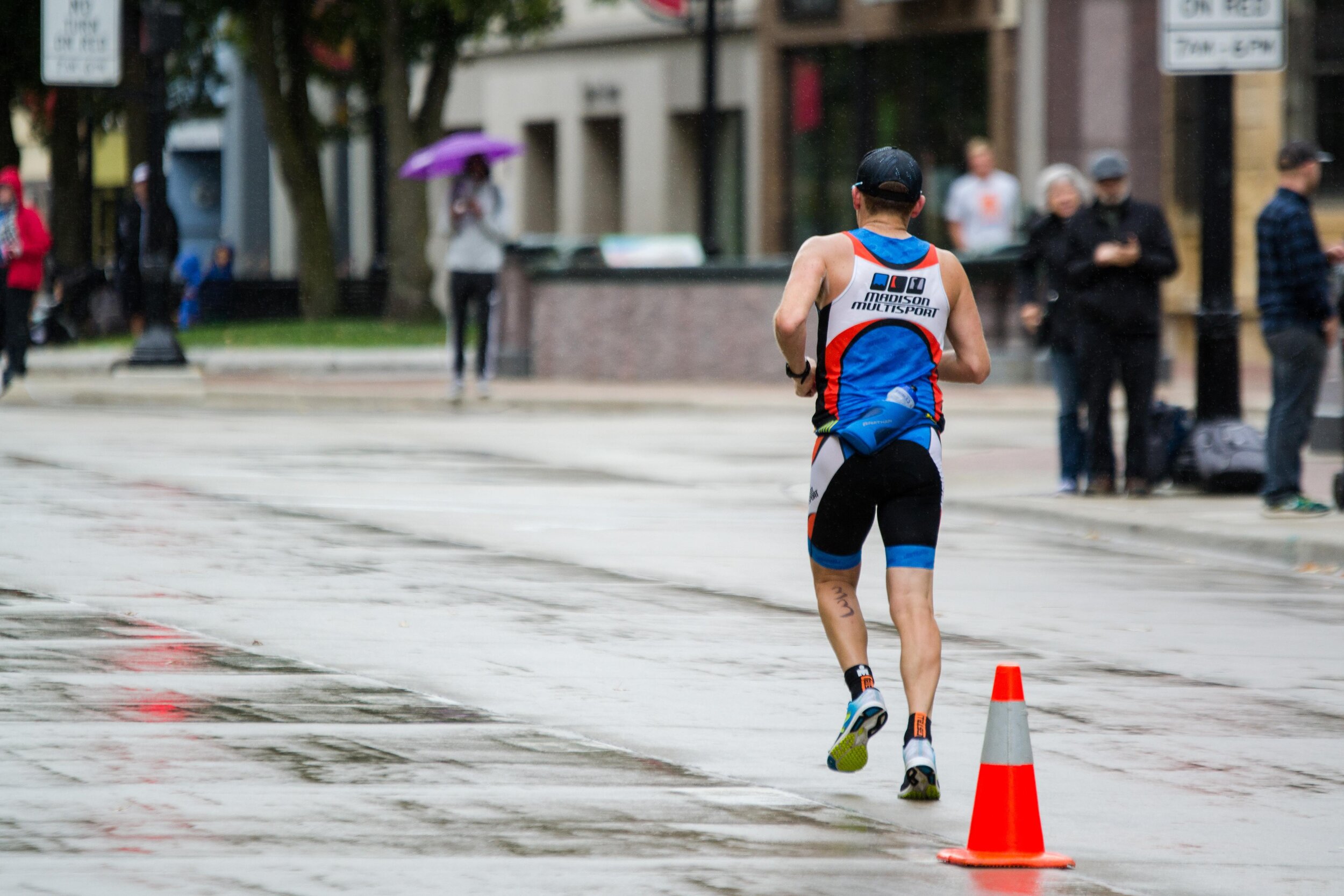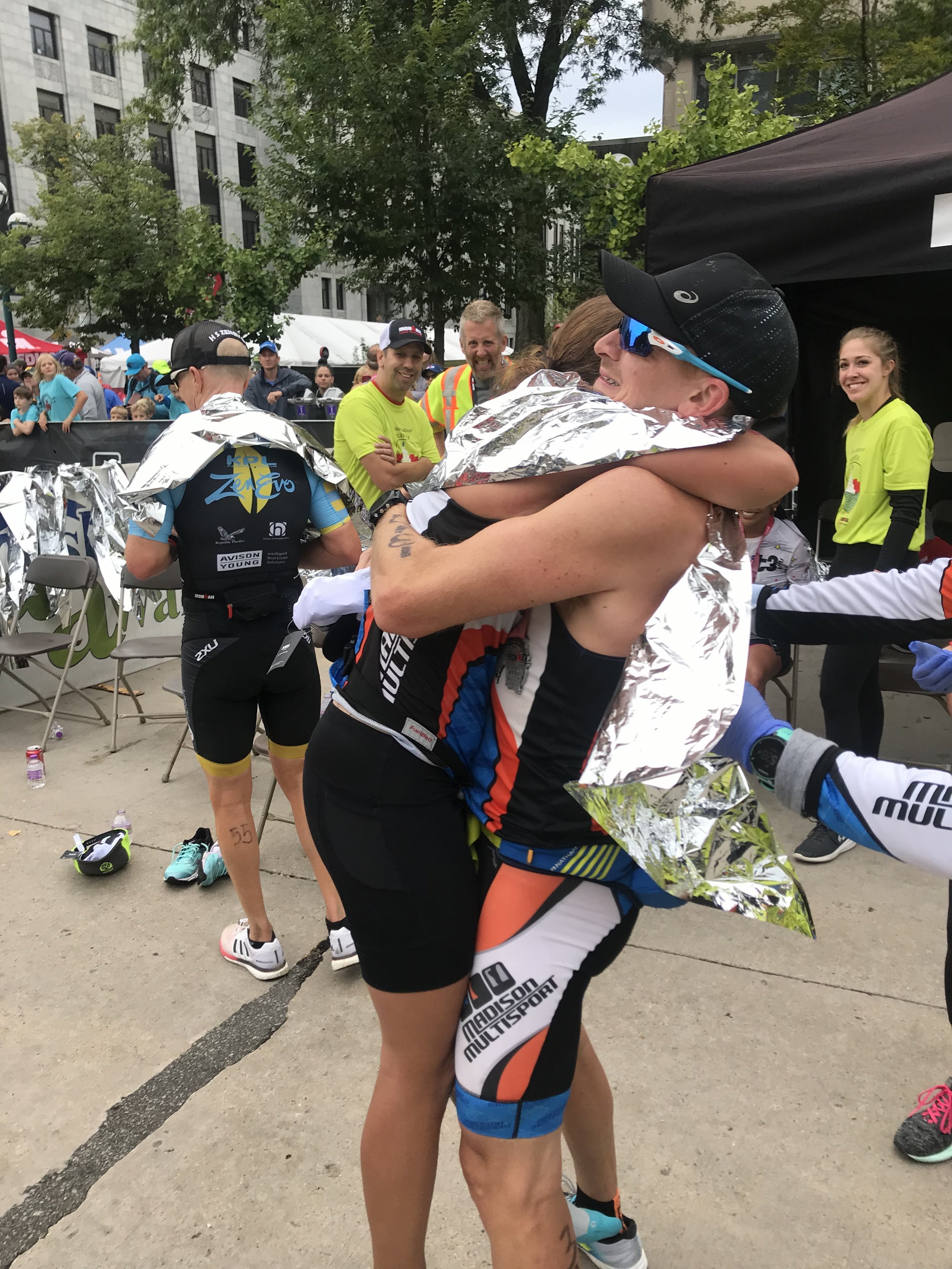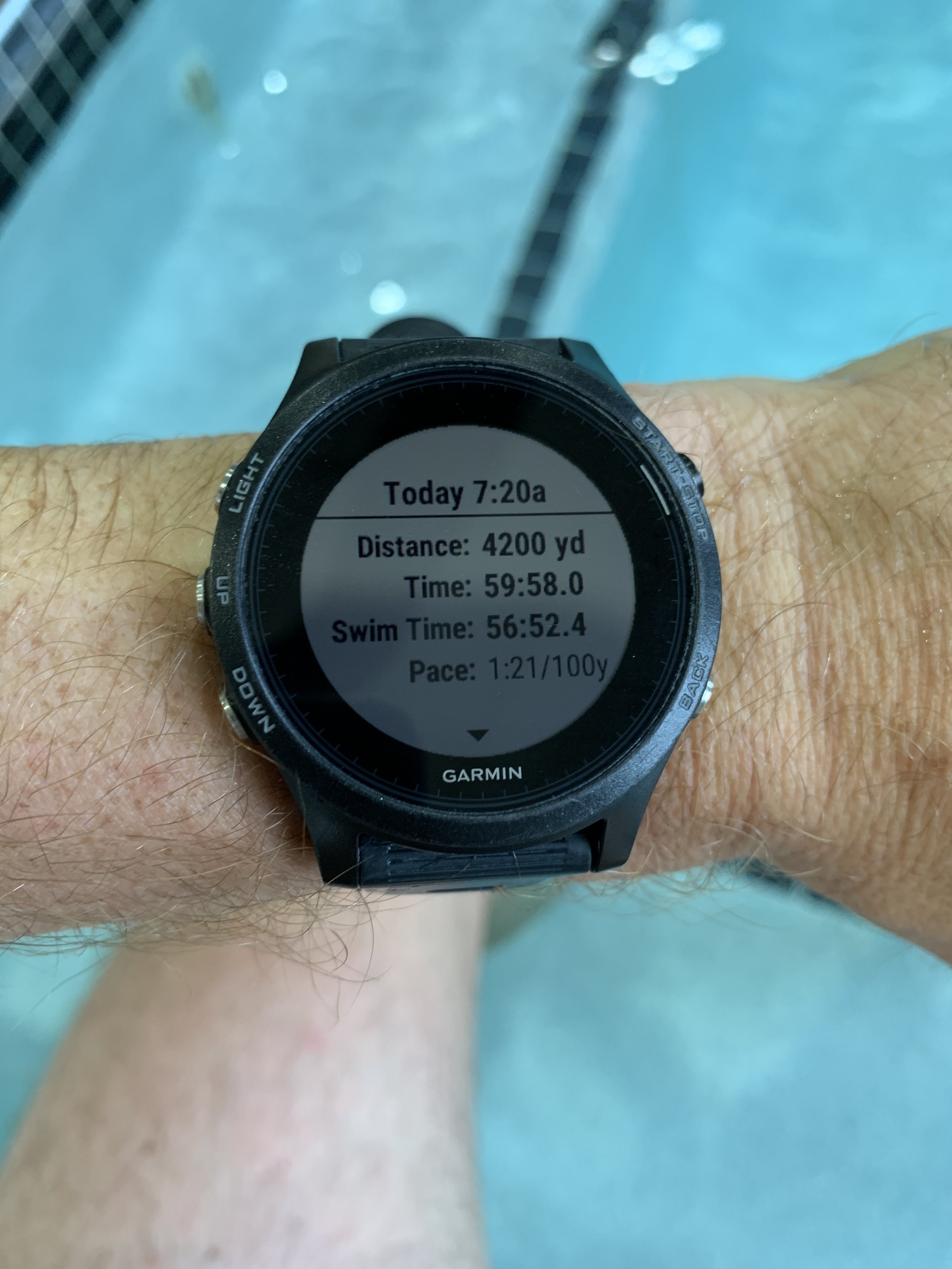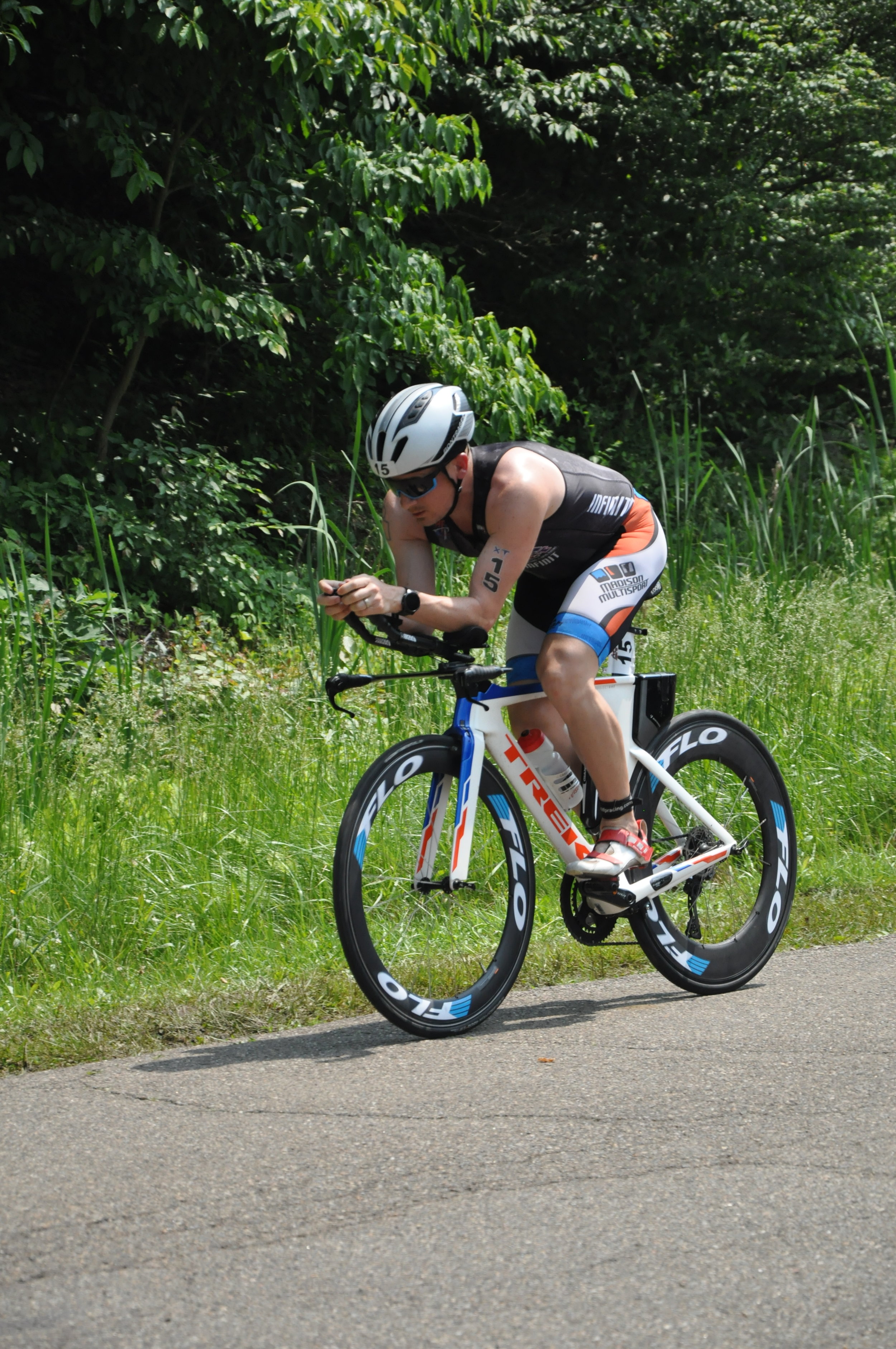Eric and I started working together in early February. He just finished Daytona Half Distance Triathlon and was in the beginning phase of his 2021 season. Eric is one of the most accomplished long course age group triathletes in the world. He has won an Ironman and many 70.3’s outright. Eric is also very passionate about the sport, he lives and breathes it every day. Add in the fact that he’s a part of the most sought-after, successful triathlon team on the planet: Zwift Academy Triathlon Team.
As an athlete, Eric likes to race a lot. Having big races and goals is a huge motivator for him. The training goals provide some motivation, but not as much as competing. With this in mind, it is very common to see him racing 70.3’s back-to-back. As a coach, this could be very challenging, however, you coach the athlete and understand how they tick, and prepare them properly to succeed. When you’re training at Eric’s intensity and volume, a 70.3 race is no different than his typical weekend. If done right, the aerobic and specificity that’s achieved can be tremendous. For the 6 months into 70.3 Worlds, Eric’s average training was around 15 hours per week, his weekly TSS was around 900. He only hit 1x 20 hour training week. We thrived more on moderate hours of training week after week. No flashy weeks or training sessions.
When we had our first discussion around goals, it was a one-liner “I want to win everything”…those 5 words both motivated and worried me. To win every race requires the highest level of conditioning and luck. Everything needs to be perfect. The interesting thing, even though Eric is a high-level athlete with a lot of big results, I view him as a developmental athlete. Before we could achieve world titles, we had to change some things.
When I looked through his previous training and racing data, all I saw were “possibilities” and a lot of low-hanging fruit. In his race data, we saw big drop-offs in power and pace. He would do lots of Z2, Tempo, Threshold development work yet he would still see 5-8% drop-offs in power/pace in his races. I also saw very little vo2 max work.
The first plan of attack was a Vo2 Max block that lasted 5-6 weeks. We started with simple Tabata’s then moved into 2-4 minute vo2 max style intervals. His body ate this up and we immediately saw a 15 watt improvement in his FTP. Now we had 2.5 months before IM Tulsa.
Two additional things I felt were undermining his racing performances were: 1) Bike cadence was too high, always between 90-95, and 2) he wasn’t consuming enough carbohydrates on the bike. Higher cadences over long-distance races = higher energy demands. The proof was in the data, this cadence wasn’t working and it was burning into his stores. One of the training focuses into IM Tulsa was introducing low cadence strength work. For most athletes, this would consist of 50-60rpm style of work at a variety of power, but because this was new to him, we stayed around 70-75rpms and this proved to be a good enough stimulus. The one thing I reminded him was that lower cadence development isn’t a quick fix, it takes time for this work to sink in. Also, Eric’s engine is incredibly big. An easy visual is that he didn’t have the chassis to hold the engine. The lower cadence work helped strengthen the chassis.
Eric as an athlete is incredibly easy to work with. This was a worry I had before we started working together. With high-level athletes, sometimes they have “too much” experience, and that clouds their thinking. Their confirmation bias of what used to work limits new thinking and limits further growth. Eric has to see and understand the process, and once he does, he’s all-in. He also communicates very well with what he wants and things that help him feel prepared. With someone of his experience, I’m always listening and working on a plan that builds the most fitness and confidence possible. There is no “my way of the highway” approach here.
IMTulsa was our first big test. He moved to the front of the race leading the AG field and then suffered two flat tires. How would Eric respond to this mentally? His goal was the win, would he give up knowing this was unlikely? He came off the bike and I had about 5 seconds to provide him information. “You’re only 5 minutes from 2nd”… this split wasn’t remotely accurate but I had to keep his mind focused on the short term. The next couple splits later, he ran himself into 2nd overall and then faded to 3rd. As a coach, I was very proud of his effort. He never gave up, risked it, and blew up to 3rd overall at the North American Championships with two flat tires. It was a win and a step forward. To be successful, you have to be willing to display courage when things dont go to plan. You have to adjust and think about the race outcome in different dimensions. Eric did this at Tulsa and would be a theme all season.
The second test was Des Moines 70.3. Before Tulsa, Eric had tripped over something and hurt his foot. He ran through this pain at Tulsa. This meant he wasn’t running at all before Des Moines 70.3. The X-ray showed no fracture, the Dr “oked” it, he wasn’t feeling pain, so it was likely tissue damage. The 36 hours before the race was constant thunderstorms. Like most people, we were convinced the race was going to be canceled. But it wasn’t. One issue with his swimming that we felt we solved reoccured and he immediately lost 3 minutes. How would Eric adapt? He smashed the shortened bike and now was going to run on a foot that wasn’t run on since Tulsa. Before the race we talked about not using his running watch, it would only be a distraction. He lost the overall win by 1 second. 1 second. Again, this was another huge step forward for Eric.
Photo: Pro Tri News
Kona is canceled. Everything was tracking for a huge race and now the wind in our sails was taken away. Eric was at his best fitness to date and now the biggest motivator was gone. Emotionally for both of us, it was a big hit. In 2021, I had over 10 athletes qualified for Kona when the news hit and it was a very stressful period. At the time, 70.3 Worlds didn’t provide the same motivation as Kona. I just kept repeating the phrase, “we have a huge opportunity at 70.3 Worlds and we don’t want to waste it”
We also recognized the stress of the Kona cancelation and we took two weeks of downtime and allowed the motivation to come back. The fitness was there, so the lower volumes were only helping Eric shed the fatigue. In 2019 when Eric won IMKY and was 2nd at IMWI, compared to his peak in 2021, he was training at his highest EVER training load, and we progressed to this point appropriately. He went into Madison 70.3 and rode his highest, most consistent watts he EVER has. He also increased calories per hour by 100. He was ready to smash it at 70.3 Worlds.
1 week to our Superbowl. In the days before the race, when we talked he seemed quiet, confident, and ready. He was not overthinking the race, his competition, or the weather. A quiet athlete can be a dangerous athlete. St George is a course where you have to be constantly looking for speed. Corners, downhills, uphills, cresting hills, tangents are all areas for opportunities. Thinking of SG as a static “ride your watts” type of course would be a mistake.
Race day, he started the day with an average swim… which on the most important day where every minute counts could shake anyone. However, from what we saw at Tulsa and Des Moines, Eric did what he did all summer and kept fighting. He moved through the field perfectly and took major advantage of the final downhill where for the final 13 minutes, he averaged 39.5mph, his 2-minute peak was 46.5, and his peak speed was almost 54mph. He rode the 3rd fastest bike split of 2:11 with an average speed of 25.6mph. How well would he run off of this type of effort? Each time he ran past, he looked very solid at a high effort. He was running in 2nd overall at this point with 3rd overall running incredibly well. Eric finished the day with a 1:19 run split of 6:11 average pace.
Where does someone like Eric go after a performance like this? As a coach, my job is to look for areas of opportunity. I said it earlier, Eric is still developing at a high rate. There are many areas for improvement in his swimming, cycling, and running. For an IM and 70.3 Champion and now World Championship Podium, the goals revolve around…how do we develop the fitness and skill to return to St George in May and contest for the overall win? That is the exciting part.
Thanks for reading! If you have an interest in coaching, you can find more information here!















